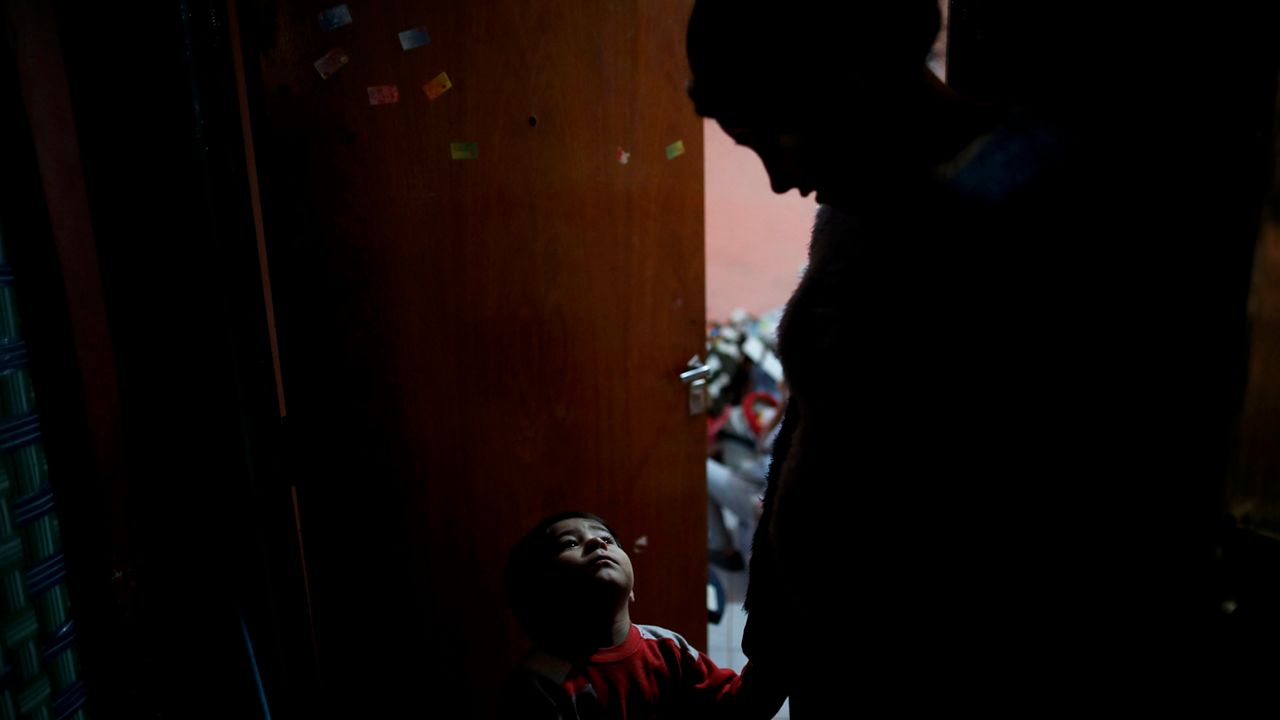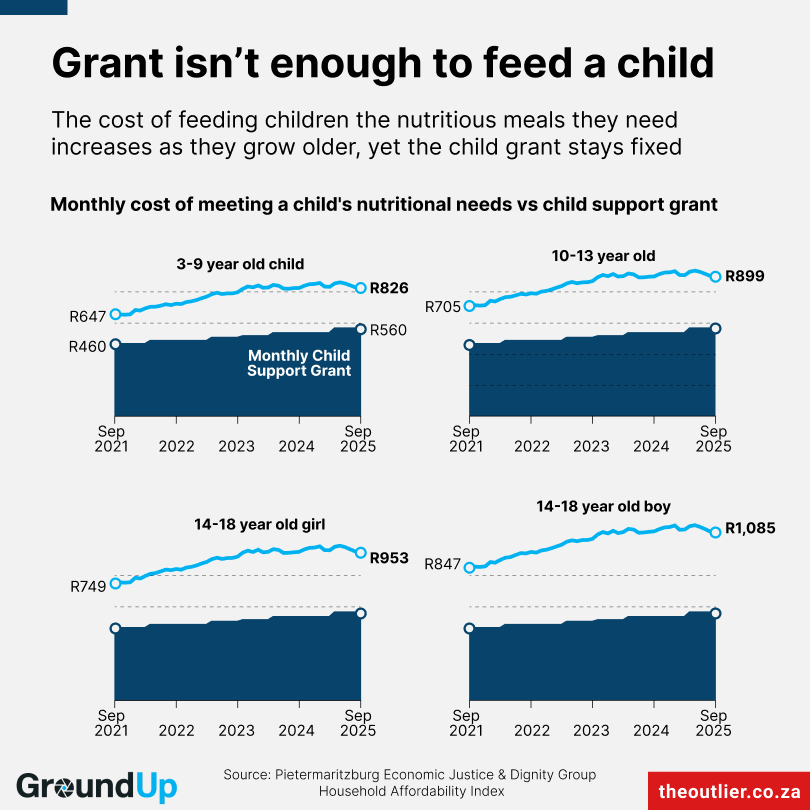Report on the Defunding of Maryland’s SNAP-Ed Program and its Impact on Sustainable Development Goals
Executive Summary
Effective October 1, the defunding of Maryland’s Supplemental Nutrition Assistance Program Education (SNAP-Ed) has created significant setbacks for the state’s progress toward key United Nations Sustainable Development Goals (SDGs). The termination of this program, which provided nutrition education and facilitated access to healthy food for low-income populations, directly undermines efforts related to poverty reduction (SDG 1), hunger eradication (SDG 2), health and well-being (SDG 3), quality education (SDG 4), and decent work (SDG 8). This report details the program’s scope and the multifaceted consequences of its closure.
Statewide Impacts on Employment, Partnerships, and Program Reach
Economic and Community Repercussions
The cessation of SNAP-Ed funding has immediate and widespread consequences for Maryland’s workforce and community infrastructure, directly conflicting with SDG 8 (Decent Work and Economic Growth) and SDG 11 (Sustainable Cities and Communities).
- Employment: 70 SNAP-Ed employees across Maryland have lost their jobs.
- Community Partnerships: 700 community partners, including critical early childhood education sites like Judy Centers and Head Start Centers, are negatively affected.
- Programmatic Scale (FY 2025): The program reached over 640,000 residents, with more than 55,000 individuals actively participating in educational initiatives.
- Partnership Network (2024): Collaborations included 541 youth education sites and 133 farmers and food pantries, forming a vital network for local food systems.
Analysis of Impacts on Sustainable Development Goals (SDGs)
SDG 2: Zero Hunger & SDG 3: Good Health and Well-being
The primary function of SNAP-Ed was to advance food security and promote healthy lifestyles, making its termination a direct blow to SDG 2 and SDG 3. The program was instrumental in bridging the gap between food assistance and nutritional knowledge.
- Erosion of Nutritional Knowledge: The loss of education on healthy food choices disproportionately affects communities in food deserts, increasing risks of diet-related health issues.
- Reduced Access to Nutritious Food: Partnerships with farmers’ markets and food pantries that increased the availability of fresh produce for low-income families have been severed.
- Impact on Child Health: The program’s focus on youth education was critical for establishing lifelong healthy eating habits, a key preventative health measure.
SDG 1: No Poverty & SDG 10: Reduced Inequalities
SNAP-Ed provided essential support for Maryland’s most vulnerable populations, including those not qualifying for SNAP benefits but still facing financial hardship. Its closure exacerbates poverty and inequality, running counter to the principles of SDG 1 and SDG 10.
- Support for ALICE Families: The program served Asset Limited, Income Constrained, and Employed (ALICE) households, which earn above the federal poverty line but struggle to afford basic necessities. These families, often ineligible for other benefits, have now lost a crucial resource.
- Increased Financial Strain: Nutrition education and resources helped families stretch limited food budgets. Without this support, households face greater food and financial insecurity.
- Disproportionate Impact: The program’s termination most severely affects children in Title I school zones and families hovering just above poverty thresholds, thereby widening existing health and economic disparities.
Case Study: Frederick County’s Setback in Early Childhood Development
Impact on Educational and Nutritional Programs
The consequences of the funding cut are particularly acute in Frederick County, where SNAP-Ed was deeply integrated with early childhood education systems, directly impacting SDG 4 (Quality Education) and SDG 2 (Zero Hunger).
Key Programs and Services Lost:
- Judy Center Food Deliveries: Six Judy Centers, serving children from birth to age five in high-poverty areas, no longer receive weekly fresh food deliveries.
- Early Childhood Nutrition Education: Monthly deliveries of fresh fruits and vegetables to over 1,500 children in 90 pre-kindergarten classrooms have been canceled.
- Family Support Resources: Cooking demonstrations, nutrition lessons, and the provision of small appliances to encourage healthy cooking at home have ceased.
- Community School Support: Six community schools and affiliated programs, such as Blessings in a Backpack, face diminished capacity to support food-insecure families.
The loss of these initiatives compromises the nutritional intake of young children during a critical developmental period and removes a vital educational component that encouraged healthy food choices within a peer-based, social setting.
Analysis of Sustainable Development Goals in the Article
1. Which SDGs are addressed or connected to the issues highlighted in the article?
-
SDG 1: No Poverty
The article directly addresses poverty by focusing on programs for “low income individuals,” “families in poverty,” and “ALICE (Asset Limited, Income Constrained, Employed) families.” The defunding of SNAP-Ed removes a critical support system for these economically vulnerable groups.
-
SDG 2: Zero Hunger
This is a central theme. The article details the loss of the Supplemental Nutrition Assistance Program Education (SNAP-Ed), which provided “nutrition education classes,” partnered with “food pantries and farmers’ markets,” and delivered “fresh food” to children and families. Its closure directly impacts food security and access to nutritious food for vulnerable populations.
-
SDG 3: Good Health and Well-being
The article connects nutrition to health, quoting a director who said SNAP-Ed helps people “understand what it is to be healthy, eat healthy and how it improves quality of life.” The program’s goal of promoting “healthy choices among children and families” and encouraging “healthy cooking at home” directly relates to preventative health measures.
-
SDG 4: Quality Education
SNAP-Ed is explicitly described as an educational program. It provided “nutrition education classes” and “nutrition lessons” in early-learning hubs like “Judy Centers and Head Start Centers” and “pre-kindergarten classrooms,” contributing to early childhood education on health and wellness.
-
SDG 8: Decent Work and Economic Growth
The economic impact of the program’s closure is stated clearly: “70 SNAP-Ed employees across Maryland will lose their jobs.” This represents a direct setback for local employment.
-
SDG 10: Reduced Inequalities
The program was specifically designed to assist marginalized and vulnerable groups, including SNAP participants, low-income families, and ALICE households who “hover just above SNAP eligibility requirements.” By removing this targeted support, the funding cut exacerbates the inequalities these groups face in accessing nutritious food and education.
2. What specific targets under those SDGs can be identified based on the article’s content?
-
SDG 1: No Poverty
- Target 1.2: Reduce at least by half the proportion of men, women and children of all ages living in poverty. The article highlights that the program served families in poverty and ALICE families, who constitute “over 30% in 2023” in Frederick County. The loss of SNAP-Ed removes a resource that helped these families stretch limited budgets, working against this target.
- Target 1.3: Implement nationally appropriate social protection systems. SNAP-Ed is part of a social protection system aimed at supporting the poor and vulnerable. Its defunding represents a weakening of this system.
-
SDG 2: Zero Hunger
- Target 2.1: By 2030, end hunger and ensure access by all people, in particular the poor and people in vulnerable situations… to safe, nutritious and sufficient food. The program facilitated access to “fresh food deliveries” and connected “local food resources with families in need,” directly aligning with this target. Its closure is a step backward.
- Target 2.2: By 2030, end all forms of malnutrition. The program’s focus on “nutrition education,” “cooking demonstrations,” and encouraging children to try “healthier and more nutritious foods” is a direct effort to combat malnutrition, particularly in early childhood.
-
SDG 3: Good Health and Well-being
- Target 3.4: Reduce by one third premature mortality from non-communicable diseases through prevention. By teaching healthy eating habits from a young age, SNAP-Ed served as a primary prevention strategy against diet-related non-communicable diseases, which are a major health challenge.
-
SDG 4: Quality Education
- Target 4.7: Ensure that all learners acquire the knowledge and skills needed to promote sustainable development, including… sustainable lifestyles. The “nutrition lessons” and education on “making good food choices” provided by SNAP-Ed are a form of education for a healthy and sustainable lifestyle.
-
SDG 8: Decent Work and Economic Growth
- Target 8.5: Achieve full and productive employment and decent work for all. The loss of “70 SNAP-Ed employees” is a direct negative impact on local employment, moving away from the goal of full employment.
-
SDG 10: Reduced Inequalities
- Target 10.2: Empower and promote the social, economic and political inclusion of all, irrespective of… economic or other status. The program specifically targeted low-income groups to bridge a resource gap. Its elimination disproportionately affects these vulnerable populations, thereby increasing inequality in access to food and education.
3. Are there any indicators mentioned or implied in the article that can be used to measure progress towards the identified targets?
Yes, the article provides several quantitative and qualitative indicators that can be used to measure the impact of the program’s defunding, representing a regression from the targets.
- Indicator for Program Reach and Participation: The article states, “Maryland SNAP-Ed reached over 640,000 residents” and “Over 55,000 individuals participated in education programs.” These numbers serve as a baseline to measure the loss of educational outreach (relevant to SDG 2 and 4).
- Indicator for Poverty and Vulnerability: The statistic that “The total percent of households in poverty and ALICE households in Frederick County was over 30% in 2023” is a direct indicator of the size of the vulnerable population affected (relevant to SDG 1 and 10).
- Indicator for Educational Partnerships: The article mentions partnerships with “541 youth education sites” and “700 community partners – including Judy Centers and Head Start Centers.” The loss of these partnerships is a measurable indicator of the program’s impact on the educational and community infrastructure (relevant to SDG 4).
- Indicator for Early Childhood Impact: The program provided food to “more than 1,500 three and four year olds” across “90 pre-kindergarten classrooms.” This specific number measures the direct impact on early childhood nutrition (relevant to SDG 2 and 3).
- Indicator for Food System Linkages: The partnership with “133 farmers and food pantries” is an indicator of the program’s role in connecting local food supply chains to families in need (relevant to SDG 2).
- Indicator for Employment: The loss of “70 SNAP-Ed employees” is a direct and clear indicator of the negative impact on local employment (relevant to SDG 8).
4. Table of SDGs, Targets, and Indicators
| SDGs | Targets | Indicators |
|---|---|---|
| SDG 1: No Poverty | 1.2: Reduce poverty in all its dimensions. 1.3: Implement social protection systems. |
The percentage of households in poverty and ALICE households in Frederick County (over 30% in 2023). |
| SDG 2: Zero Hunger | 2.1: Ensure access to safe, nutritious and sufficient food. 2.2: End all forms of malnutrition. |
Number of farmers and food pantries partnered with (133); Provision of weekly/monthly fresh food deliveries to families and children. |
| SDG 3: Good Health and Well-being | 3.4: Reduce premature mortality from non-communicable diseases through prevention. | Number of children (over 1,500) receiving fruits and vegetables, promoting healthy eating habits from a young age. |
| SDG 4: Quality Education | 4.7: Ensure learners acquire knowledge and skills for sustainable lifestyles. | Number of individuals participating in education programs (over 55,000); Number of youth education sites (541) and community partners (700) affected. |
| SDG 8: Decent Work and Economic Growth | 8.5: Achieve full and productive employment and decent work for all. | Number of jobs lost due to the program’s closure (70 employees). |
| SDG 10: Reduced Inequalities | 10.2: Empower and promote the social and economic inclusion of all. | The program’s reach to specific vulnerable groups (SNAP participants, low-income individuals, ALICE families); Total number of residents reached (over 640,000). |
Source: baltimorefishbowl.com






